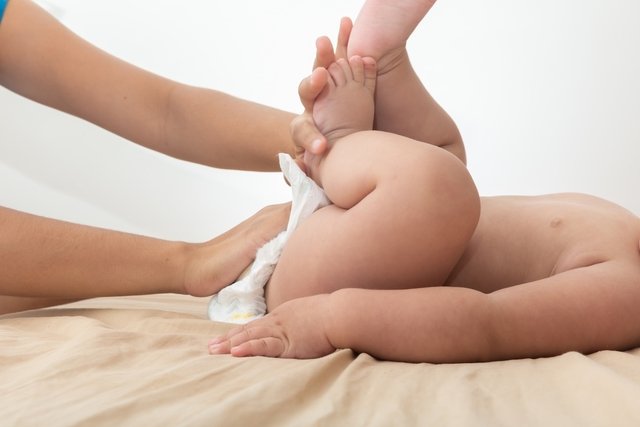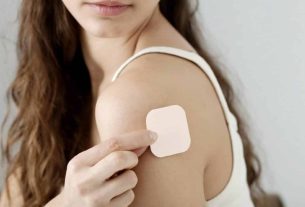Baby dermatitis, popularly known as diaper rash, happens when the baby’s skin is in contact with irritating substances for a long time, such as urine, saliva or even some types of creams, resulting in inflammation that leaves the skin red, flaking, itchy and painful.
Although dermatitis is not a serious condition and can be cured when treated properly, it should be avoided, as skin irritation can cause wounds that can become infected, especially in places like the butt, for example.
Therefore, it is important to keep the baby’s skin always clean and dry, following some simple guidelines such as changing diapers when they are dirty, wiping excess drool from the face or avoiding the use of creams that are not suitable for the baby’s skin, for example. example. See other important precautions to avoid the appearance of diaper dermatitis.

Main symptoms
The characteristic signs and symptoms of dermatitis are:
- Red spots on the skin that peel;
- Small red bumps or blisters on the skin that itch;
- More frequent crying and irritation.
Typically, skin changes appear in areas with skin folds or that are in frequent contact with clothing, such as the neck, intimate area or wrists.
Online symptom test
To find out if you have dermatitis, please indicate your symptoms below:
This test is a tool that serves as a means of guidance only. Therefore, it is not intended to provide a diagnosis and does not replace consultation with a dermatologist or general practitioner.
Possible causes
Baby dermatitis can be caused by:
- Frequent contact with urine or feces;
- Use of ointments and creams;
- Perfumes;
- Soaps;
- Fabrics;
- Jewelry;
- Frequent contact with saliva.
When dermatitis is suspected, it is important to consult a pediatrician, especially when the cause is not known.
How the treatment is carried out
In most cases, contact dermatitis disappears naturally after about 2 to 4 weeks. However, to speed up recovery, alleviate the baby’s discomfort and prevent the appearance of wounds, it is important to keep the area clean and dry at all times, as humidity can worsen irritation. Furthermore, applying a moisturizing cream designed for babies or applying a zinc ointment to the affected area after bathing helps protect the skin, facilitating healing.
What to do to avoid dermatitis
The best way to ensure that contact dermatitis does not develop is to keep your baby’s skin clean and dry, as well as avoiding possible sources of skin irritation. Some precautions are:
- Wipe off excess drool and change wet clothes;
- Changing diapers soiled with urine or feces;
- Cut clothing tags;
- Give preference to cotton clothes and avoid synthetic materials;
- Swap metal or plastic accessories for rubber;
- Apply zinc creams to the intimate area to avoid moisture;
- Avoid using creams and other products that are not suitable for baby’s skin.
If it is already known that the baby is allergic to some type of substance, it is important to keep him/her away from that substance and, therefore, it may be important to read the label of clothes and toys to ensure that this type of material is not in their composition. .
This care can also be carried out even if the baby has dermatitis, as they facilitate skin healing, accelerating recovery.
Bibliography
- Guzmán, R. Dermatology. Atlas, diagnosis and treatment. 6. McGraw Hill, 2015.
- PONTIFICAL CATHOLIC UNIVERSITY OF CHILE. DIAGNOSIS AND MANAGEMENT OF DIAPER DERMATITIS IN APS. Available at: <https://medicina.uc.cl/publicacion/diagnostico-y-manejo-de-la-dermatitis-del-panal-en-aps/>. Accessed on Feb 16, 2022
- SÁEZ, M et al. Clinical approach and comprehensive management of irritative diaper dermatitis. Acta Pediatr Mex. 38. 6; 427-432., 2017
- WELL,T . Diaper rash and related disorders. Comprehensive Pediatrics. 20. 3; 151-158, 2016





